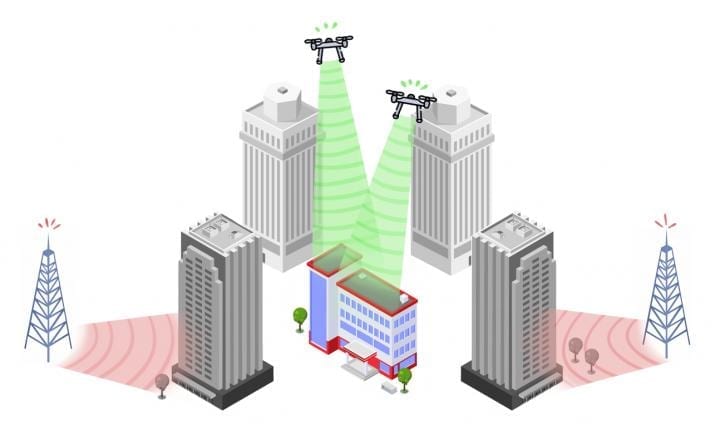
News
Russian Researchers Use UAVs to Boost Mobile Networks
Mathematicians from the RUDN University in Russia have proposed – and simulated – how drones can be used to boost a cellular network.
Often, cell (or mobile) networks are subject to blind spots due to physical obstructions such as buildings or hills.
In addition to everyday obstructions such as these, the signals emitted by transmission stations is done on a two-dimensional plane and often does not take into account the different heights of the tower and the person using the phone.
But these blind spots could be avoided using UAVs, the mathematicians propose.
In an article published in the journal IEEE Transactions on Vehicular Technology, the Russian academics, who worked together with colleagues from the Technological University of Tampere (Finland) describe how to solve this troubling issue.
Konstantin Samuylov is a professor and head of the Applied Informatics and Probability Theory Department, at RUDN University, and worked on the paper.
Titled “Analyzing Effects of Directionality and Random Heights in Drone-based mmWave Communication”, the paper explains how drones can be a useful tool for solving such problems.
“Drones have become a promising tool for a variety of applications — from wireless information transfer to delivery of goods. They are of interest as flying access points for cellular network users, and as mobile signal amplifiers,” Samuylov said in a statement.
The process involved simulating the cell network system to mimic the real life problems of unobstructed communication transmission – and showed that the coverage of the network could be significantly improved.
“We simulate a communication system using drones, taking into account many features of the real life situation, including random distances between simulation objects (from drones to users, for instance). We model the system in three dimensions, i.e. in 3D format., which significantly improves the accuracy of modeling in comparison with the known models. The approach itself – the use of unmanned aerial vehicles – will increase the coverage of the cellular network by about 40%, ” he said.
Simply put, the drones fly above obstacles and differences in altitude, and can then transmit the communication signals into difficult locations.
The optimum angle for transmission between the drone and the phone user , the researchers note, is at an almost right angle.
Citation: R. Kovalchukov et al., “Analyzing Effects of Directionality and Random Heights in Drone-based mmWave Communication,” in IEEE Transactions on Vehicular Technology.
DOI: 10.1109/TVT.2018.2857215, URL: http://ieeexplore.ieee.org/stamp/stamp.jsp?tp=&arnumber=8412525&isnumber=4356907




















